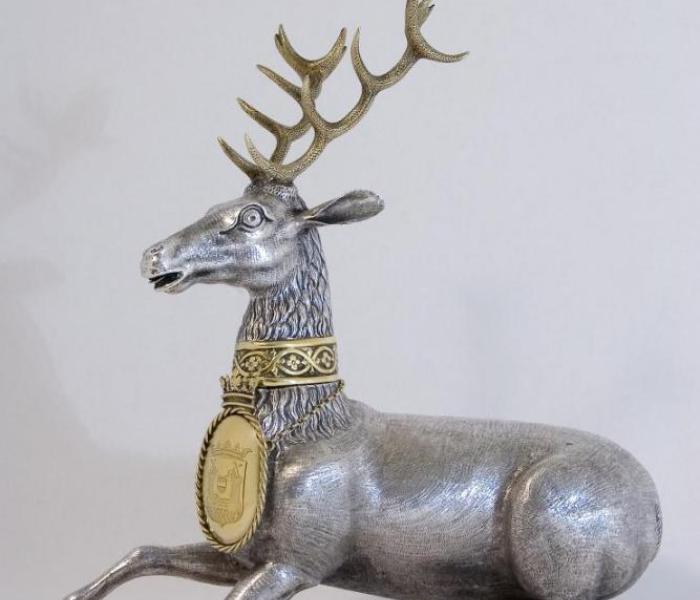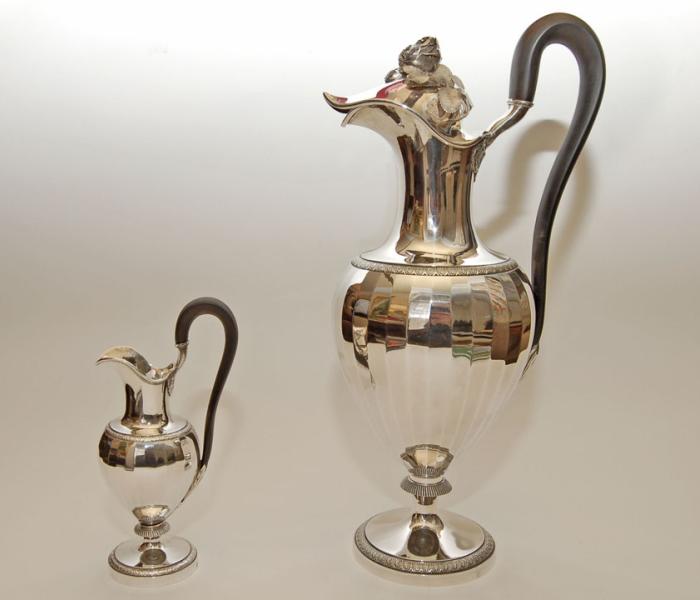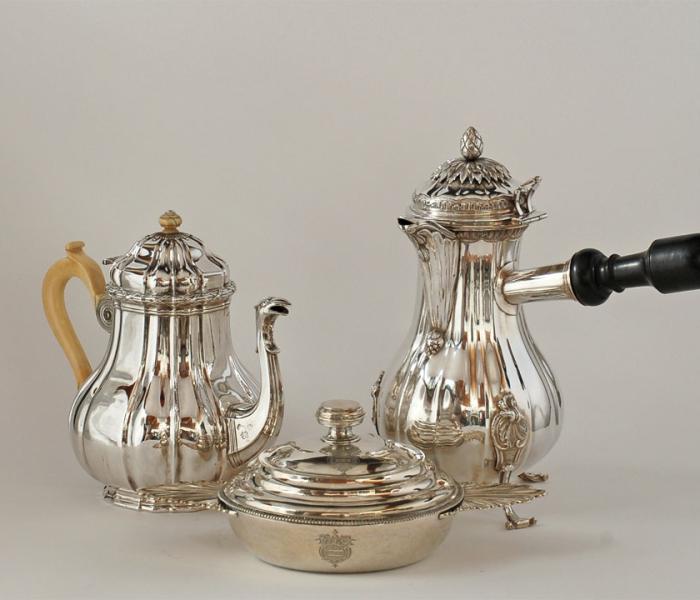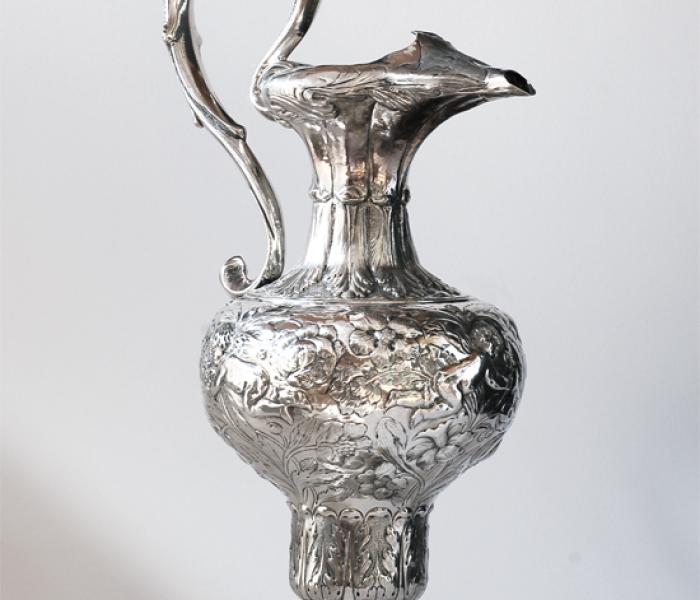Silver collection
MOU holds a rich and varied collection of silver, the vast majority of which presents the various highlights and regions of European silversmithing; the remaining part offers a fine and almost complete overview of Oudenaarde’s silver production during the ancien régime.
The collection can be admired in the main silver room, all the way up under the roof of the town hall. It can rightly be called one of the largest silver collections in Flanders! More than 80% of the collection is a bequest from Mr. and Mrs. Ernest and Hélène de Boever-Alligoridès.
Oudenaarde’s gold- and silversmithing flourished at about the same time as the tapestry industry (16th–18th centuries), and the European collection offers an overview of household and ceremonial silver from the 16th, 17th and 18th centuries. The great diversity of drinking vessels alone is striking: goblets, jesting cups, guild cups, beakers shaped like animals, and cups incorporating exotic materials.
Special pieces in collectors’ cabinets
In the 16th and 17th centuries, kunstkabinetten, or cabinets of curiosities, emerged. Princes, nobles and scholars set up collections of curiosities or rare objects. Through contact with the merchants of foreign countries, trade in exotic materials grew. Special objects were also brought back to the Netherlands during the voyages of discovery. The cabinets were adorned with exotic shells, corals, rhinoceros horns, turtle shells and coconuts encased in silver mounts. The Oudenaarde collection includes a coconut cup, a nautilus shell cup, a powder horn in the shape of a turtle, mounted Chinese porcelain and ivory tankards.
Festively decorated silver utensils
One of the highlights is a festively set table with silver utensils from the 18th century. Tables and buffets featuring showy silver items were replaced during the 18th century by richly laid banquet tables deploying silver in a more refined way. In this period, a new table culture emerged. This refined culture of dining required new utensils for specific uses, such as terrines for meat or soup, saucers, sauce boats, oil and vinegar sets, carafe holders, casters, mustard pots, cooling buckets, kettles, candlesticks, chafing dishes, all manner of dishes, bread baskets and cutlery.



